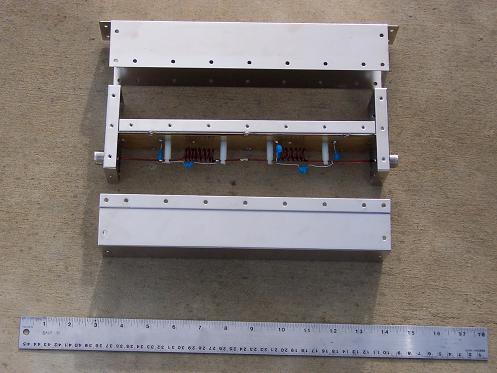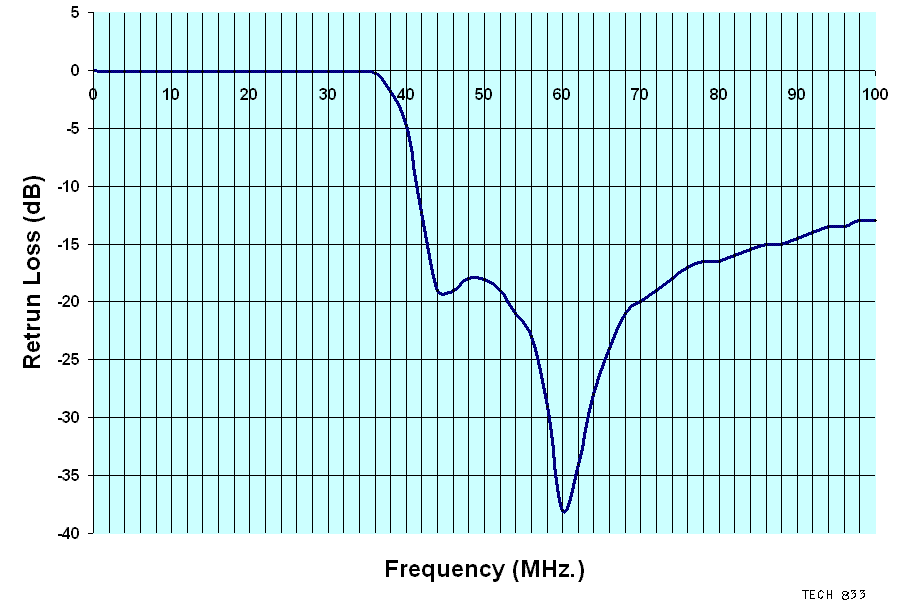    
Tech833
Moderator
Username: Tech833
Post Number: 1815
Registered: 8-2002
| | Posted on Friday, February 05, 2010 - 8:58 pm: | 


|
RF Limited DF3000 filter review
Every transmitter (including a CB radio) puts out some amount of unwanted energy outside of the intended frequency. Most transmitters tend to put out energy at multiples of the desired frequency, each multiple is called a íHarmonicí. The purpose of a low-pass filter is to suppress or remove harmonic emissions from a transmitter.
Before television switched to digital last year, CB radio signals interfering with television reception was a very frequently topic of discussion. The term ĎTVIí (TeleVision Interference) was well known by most residential CBers. It happens that the second harmonic of the CB band falls right around VHF TV channel 2. But even now that television has gone all digital, there still exists the worry about CB and other transmitters causing interference with all sorts of other devices.
External low-pass filters come in all shapes and sizes, and are usually chosen based on power handling capability. The RF Limited DF3000 is rated at 1000 watts of carrier power and 3000 watts peak. It is designed to be used with transmitters operating at 30 MHz. and lower. Since the CB band is around 27 MHz., the DF3000 is well suited for this purpose.
The DF3000ís all metal cabinet measures 11 inches long, 3.5 inches high, 2.2 inches thick, and has drilled tabs for mounting. There are standard UHF female connections on each end of the filter that accept the standard PL-259 connector. The DF3000 filter, like others, is normally inserted between the transmitter final stage and the antenna via a short coax jumper cable.
I know some of you just have to see inside your toys, so hereís the scoop- Inside the DF3000 you will find two inductors and six capacitors. These components form two effective tuned circuits that are nearly invisible below 30 MHz. but act like big RF resistors above that. If you inject RF above 30 MHz. into the filter, you will find varying degrees of signal loss.

The power handling capability is directly affected by the voltage handling values of the internal components. At 50 ohms, if you run 1000 watts, there will be about 4 amps of RF current on the feedline. Any series inductors need to be capable of handling this current, and parallel capacitors need to be capable of handling the voltages across them. The capacitors in the DF3000 are all rated at 20,000 volts, which should be plenty up to 1000 watts of RF. The inductors are wound out of 14 gauge enameled solid copper, also good up to 1000 watts. Power levels over 1000 watts should be avoided to prevent component failure.
I put the DF3000 on the bench and began with a sweep through the filter to plot its response curve and measure return loss, shown here. Using an IFR 1200 Super S service monitor, the filter shows a mere 0.1 dB insertion loss below 30 MHz. The DF3000 begins to roll-off at approximately 35 MHz. At 44 MHz., there is a sharp attenuation of about -22 dB. Then, there is a deeper attenuation around 61 MHz. Above that, attenuation response slowly decreases, eventually leveling off at around -13 dB at 100 MHz.

If your radio is putting out harmonics and interfering with a stereo receiver, scanner, or other radio device operating on a frequency higher than the CB band, the DF3000 will offer some degree of filtering to help reduce or get rid of the problem. Of course, more than one DF3000 could be used in series to drastically increase the attenuation above 30 MHz.
The RF Limited DF3000 is well built, and uses top quality components. The enclosure is much larger than it needs to be, but that isnít always a bad thing, it is much better than a cramped enclosure with no room to troubleshoot or repair in case things go wrong.
Whether you are running a high power CB station, or a ham station, you will find the DF3000 a useful tool to help clean up your signal.
-Tech 833
Your radio 'Mythbuster' since 1998
|



